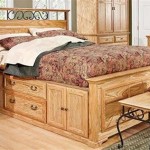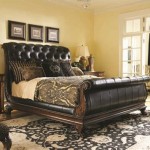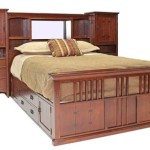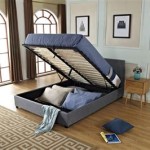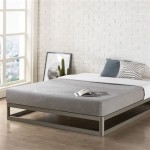Can Bed Bugs Go Through Mattress Covers?
Bed bugs, notorious for their resilience and adaptability, have raised concerns about their ability to penetrate mattress covers. Understanding the nuances of mattress covers and bed bug behavior is crucial for effective pest control.
Mattress covers, often made of woven fabric or waterproof materials, serve as a protective barrier against bed bugs. However, the effectiveness of a mattress cover depends on its construction, material, and fit. While some covers may provide complete protection, others may allow bed bugs to pass through due to gaps, tears, or loose seams.
Types of Mattress Covers and Their Efficacy
Woven Fabric Covers: These covers consist of tightly woven fibers that create a physical barrier against bed bugs. However, if the fabric is not densely woven or has any tears, bed bugs may be able to crawl through the gaps.
Waterproof Covers: Made from materials like vinyl or polyurethane, these covers provide an effective barrier against bed bugs and other moisture-borne pests. The waterproof material prevents bed bugs from accessing the mattress and creates a slippery surface that makes it difficult for them to climb.
Encasement Covers: These covers completely encase the mattress, including the sides and corners. They are typically made of durable, hypoallergenic materials and provide the highest level of protection against bed bugs. The snug fit prevents bed bugs from entering or hiding within the mattress.
Factors Affecting Mattress Cover Efficacy
Fit: A mattress cover should fit the mattress snugly, without any gaps or loose areas. If the cover is too loose, bed bugs may be able to crawl underneath or through the seams.
Durability: The material of the mattress cover should be durable and resistant to tearing. If the cover becomes damaged, bed bugs may be able to penetrate it.
Regular Maintenance: Mattress covers should be inspected regularly for tears or damage. They should also be washed and disinfected according to the manufacturer's instructions to prevent bed bug infestations.
Additional Tips for Bed Bug Prevention
In addition to using mattress covers, there are several other strategies to prevent bed bug infestations:
Vacuuming: Regular vacuuming of floors, furniture, and mattresses can remove bed bugs and their eggs.
Washing and Drying: Bed sheets and bedding should be washed in hot water and dried on high heat to kill bed bugs.
Decluttering: Reducing clutter in bedrooms and other areas can minimize hiding places for bed bugs.
Professional Pest Control: If you suspect a bed bug infestation, contact a reputable pest control company for professional treatment.
Conclusion
While mattress covers can provide a valuable layer of protection against bed bugs, it is important to choose the right type and ensure it fits snugly. Regular inspection, maintenance, and a multi-faceted pest control approach are crucial for effective bed bug prevention and eradication.

The Best Mattress Covers For Bed Bug Protection

Can You Still Get Bed Bugs With A Mattress Cover

Bed Bugs Do Mattress Encasements Help Pest Management Professional

Do Bed Bug Covers Work Integrity Solutions

Mattress Encasements For Bed Bugs

Do Mattress Protectors Prevent Bed Bugs Yes No Here S Why Ecoy

Remedy Bed Bug Dust Mite Cotton Mattress Zip Cover Protector Twin Xl 64 00001 Txl The Home Depot

9 Of The Best Bedbug Mattress Covers

Are Bed Bug Mattress Covers Effective Encasing Stops Biting

Can Bed Bugs Live In Mattresses Bug Treatment Orkin

